
Russian Olive Tree How Long It Takes To Grow Olives? Arbor Facts
Russian-olive (Elaeagnus angustifolia L., Elaeagnaceae) is a small tree or large multistemmed shrub native to southern Europe and central and eastern Asia (Katz and Shafroth 2003; Little 1961).Introduced to Canada and the United States in the early 1900s for use as an ornamental, a shade plant, and a windbreak (Hansen 1901; Katz and Shafroth 2003), Russian-olive has since become invasive.
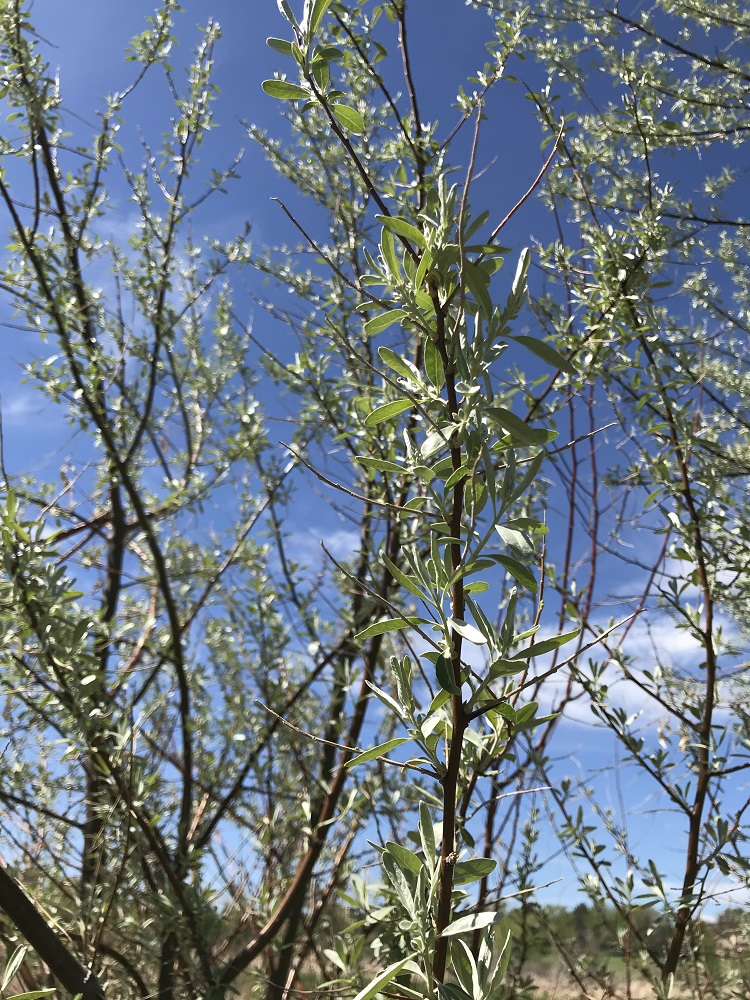
Russian Olive Trees Naturalist Perspective
A small tree, the Russian olive (Elaeagnus angustifolia) tops out at a height and spread of 6 metres (20'). Leaves/Needles. Leaves measure 4 to 8 cm long, are lance-shaped (without teeth) and have a short petiole. They have a dull grayish-green to an almost silvery colour with subtle veins above. They have and brown to rusty-coloured underneath.
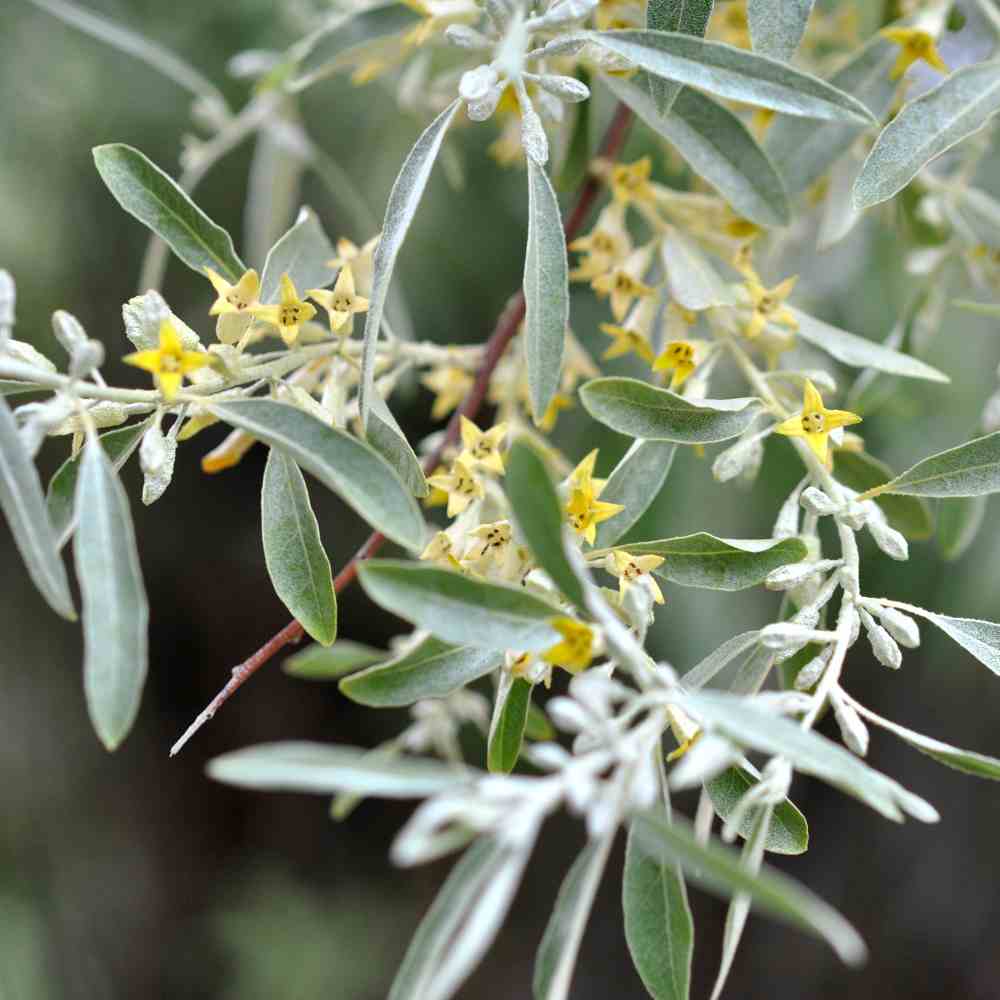
Invasive Russian olive tree how to get rid of it and why
Prevention inspired; Alberta protected. Donate. 0 items $0.00. Login/Renew Member Portal. Prevention inspired; Alberta protected. 0 items $0.00. Donate.. Russian Olive Seeds, defleshed Photo Credit Steve Hurst, USDA NRCS PLANTS Database, Bugwood.org. Russian Olive Photo Credit Thorns Joseph Berger, Bugwood.org.

Russian Olive Tree. A truly beautiful all season tree. Small fragrant
Possible restrictions can be that: it is illegal to plant, grow or cultivate Russian olive, sale of Russian olive not allowed, transplanting Russian olive is not permitted, commerce or sharing of Russian olive seeds is disallowed, cutting down or removing of existing specimens is mandatory.

PlantFiles Pictures Silver Russian Olive (Elaeagnus angustifolia) by
Along the Milk River in Montana and Alberta, the highest densities of Russian-olive were along the reach that had more livestock grazing and beaver harvesting,. The oldest Russian-olive tree was as old or older than the oldest cottonwood in 39% and 14% of the stands on the Marias and Yellowstone rivers, respectively.

Russian Olive Tree How Long It Takes To Grow Olives? Arbor Facts
Russian Olive is an open deciduous tree with a more or less rounded form. Its relatively fine texture sets it apart from other landscape plants with less refined foliage. This tree will require occasional maintenance and upkeep, and is best pruned in late winter once the threat of extreme cold has passed.

Russian Olive Tree How Long It Takes To Grow Olives? Arbor Facts
Within 50 years, Russian olive in this reach has moved upriver into Alberta and downriver to the Fresno Reservoir. It is now present on 69 of the 74 meander lobes sampled, comprising 34%, 62%, and 61% of all Russian olive and plains cottonwood seedlings, saplings, and trees, respectively.

Russian Olive Trees & Shrubs › Anything Grows
Elaeagnus angustifolia, commonly called Russian olive, silver berry, oleaster, or wild olive, is a species of Elaeagnus, native to western and central Asia, Iran, from southern Russia and Kazakhstan to Turkey, parts of Pakistan and parts of India. [better source needed] As of 2020, it is widely established in North America as an introduced species.

Russian Olive (Elaeagnus angustifolia Std) Paysagiste, Paysagiste
Russian Olive - Trees & Shrubs $ 259.99 $ 195.00 10 Gallon More compact tree with thorny branches, silver foliage and strongly scented tiny yellow spring blooms. Grey ornamental berries persist over winter. Does not tolerate wet sites. Grows To: 20′ H x 15′ W Exposure: Full sun Zone 3 Drought tolerant once established

Known to us as the Russian olive tree, this is what is making my world
Russian Olive is an open deciduous tree with a more or less rounded form. Its relatively fine texture sets it apart from other landscape plants with less refined foliage. This tree will require occasional maintenance and upkeep, and is best pruned in late winter once the threat of extreme cold has passed.

Oleasters tough plants for harsh conditions
Family - Elaeagnaceae Type - shrub Height - 6 to 13 feet (2 to 4 meters) Exposure - full sun, part sun Soil - ordinary Foliage: deciduous - Flowering: May to June - Fruiting: August to October Invasive in - United States, Canada Its name comes from its native region - Southern Russia - and the resemblance to the olive tree around the Mediterranean.
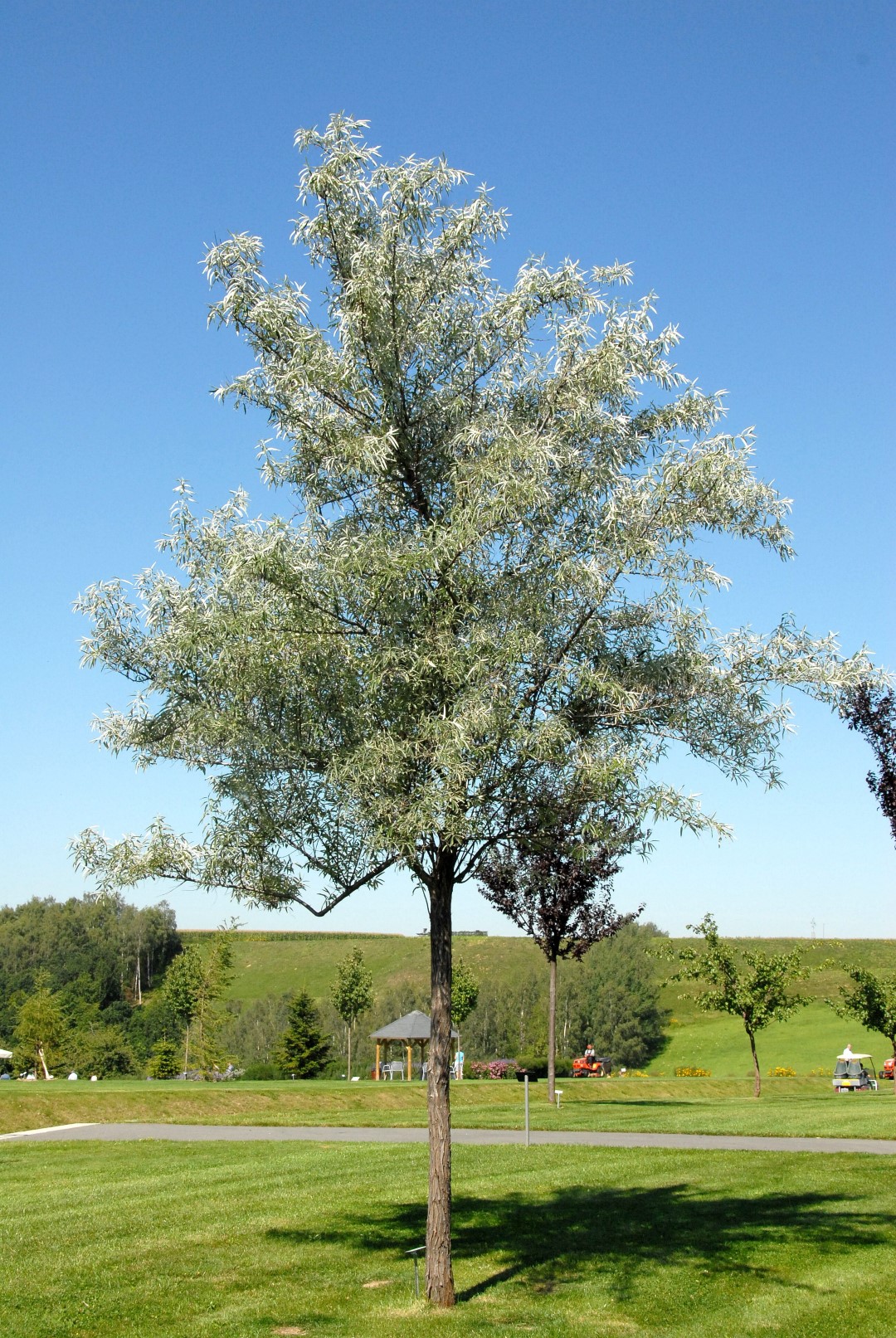
Elaeagnus angustifolia Russian olive, Oleaster Van den Berk Nurseries
Russian Olive is an open deciduous tree with a more or less rounded form. Its relatively fine texture sets it apart from other landscape plants with less refined foliage. This tree will require occasional maintenance and upkeep, and is best pruned in late winter once the threat of extreme cold has passed.
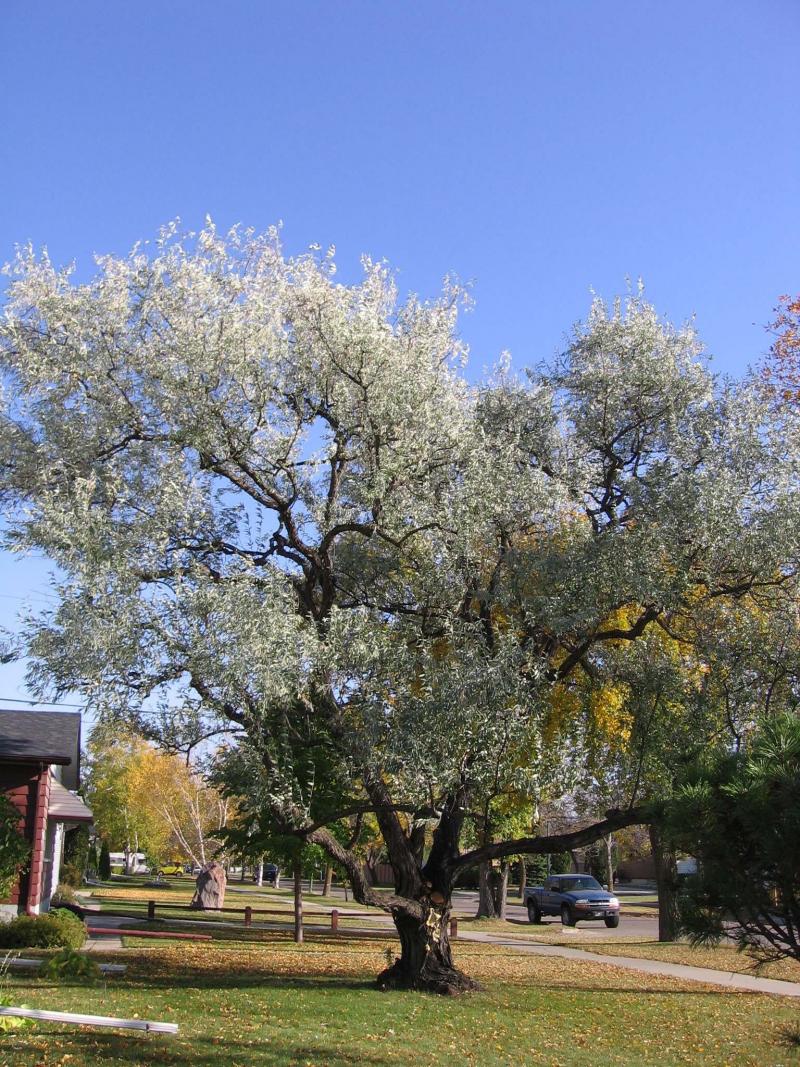
Russian Olive Tree Flowers Elaeagnus angustifolia (Russian Olive
Russian-olive (Elaeagnus angustifolia L.) was common as an ornamental plant in the southwestern United States early in the 20th century and was introduced in the 1930s in the U.S.Great Plains for soil conservation (Stannard et al. Reference Stannard, Ogle, Holzworth, Scianna and Sunleaf 2002).Russian-olive produces thousands of oblong fruits per tree late in the fall (Katz and Shafroth.
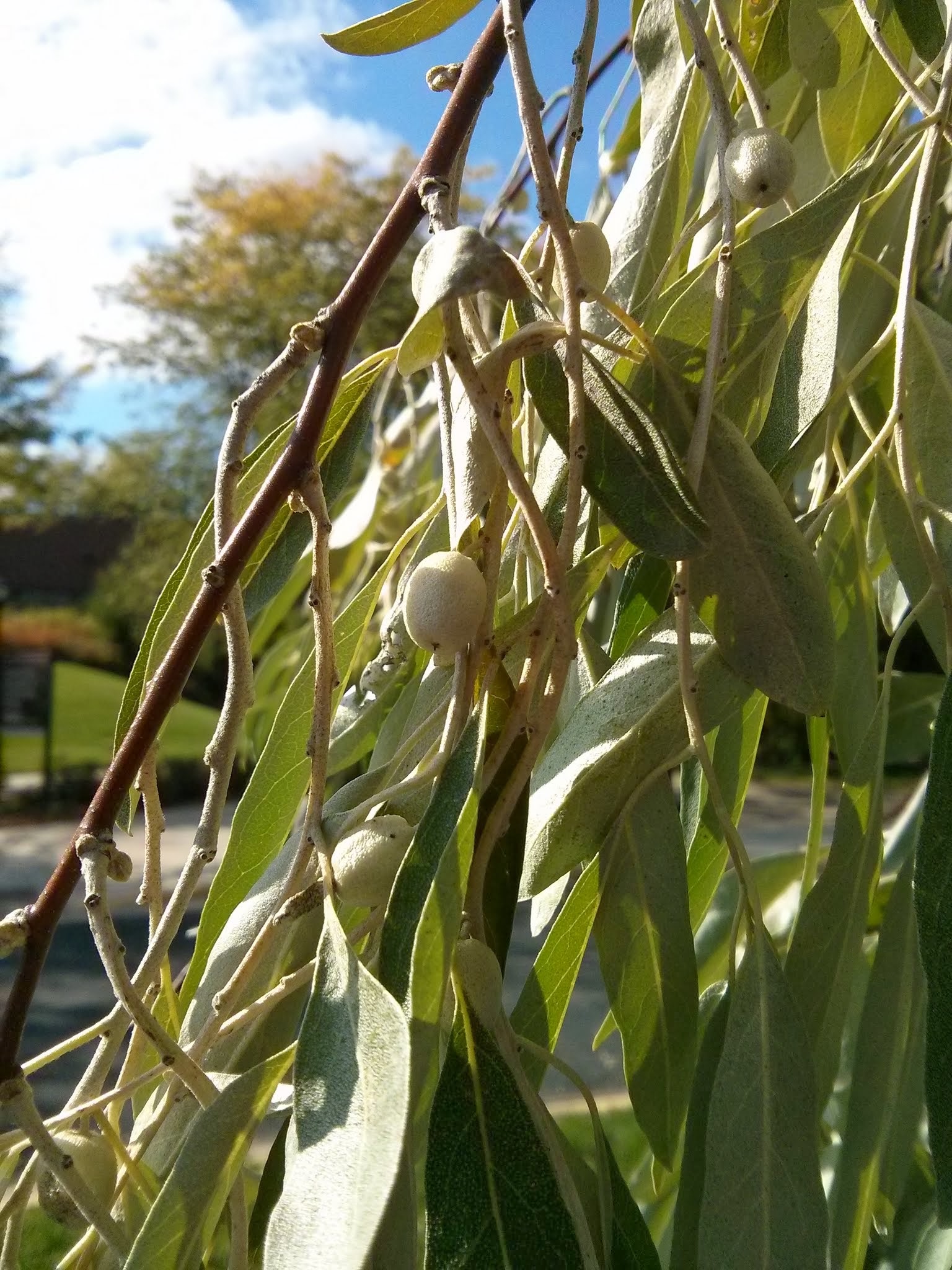
RUSSIAN OLIVE ELAEAGNUS ANGUSTIFOLIA The UFOR Nursery & Lab
Buy Russian Olive (Tree Form) at Blue Grass Nursery. 🌳 The largest product selection in Alberta | Special Pricing | Exclusive Deals and Promotions🍒. Russian Olive (Tree Form) Latin Name: Elaeagnus angustifolia. Fragrant, small yellow blooms in spring. Silver foliage retained through winter. Salt and drought tolerant.

Russian Olive (Elaeagnus angustifolia)
An invasive Russian olive, showing damage from an infestation of Aceria angustifoliae mites. of British Columbia and Alberta, where wild-growing Russian olives are particularly problematic.
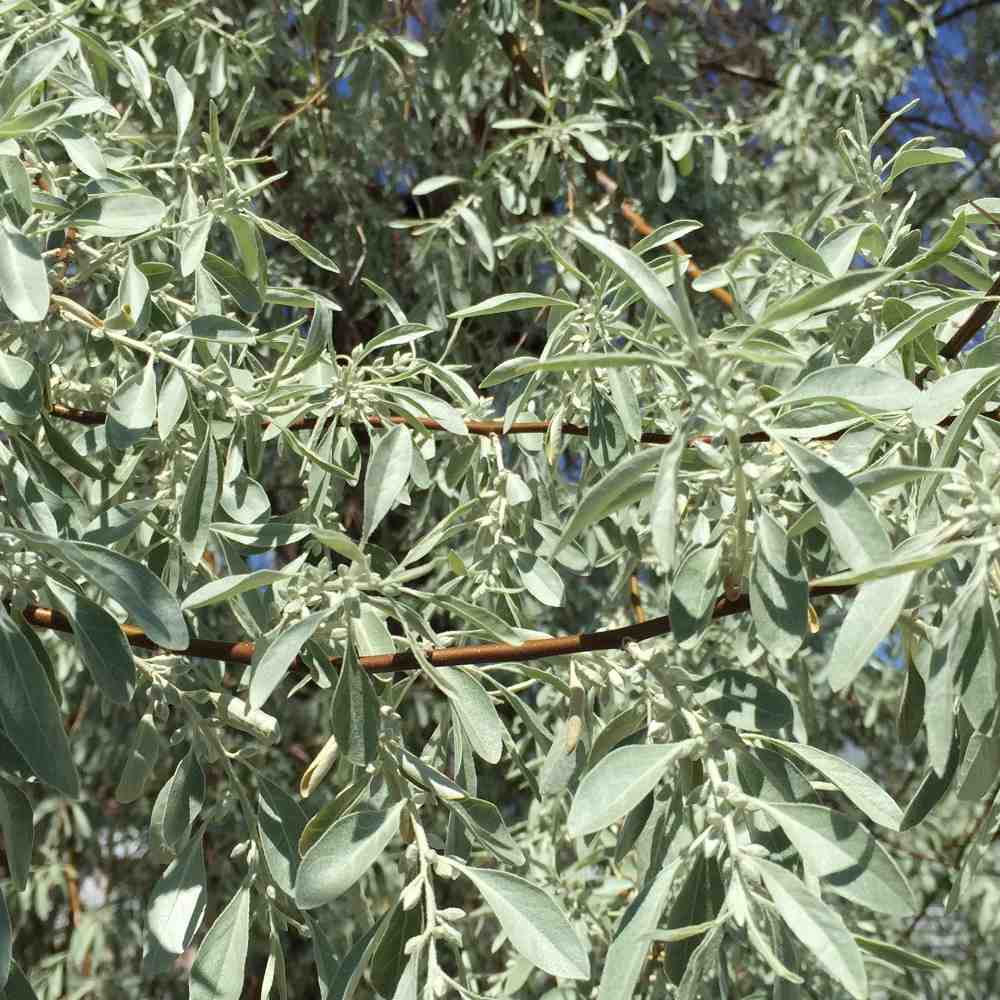
Invasive Russian olive tree how to get rid of it and why
Find Russian Olive (Elaeagnus angustifolia) in Strathmore Calgary Drumheller Brooks Okotoks Alberta AB at Eagle Lake Nurseries (Oleaster) OPEN WEEKDAYS FROM 8 AM TO 5 PM. CALL 403 934 3670. Availability;. Russian Olive is an open deciduous tree with a more or less rounded form. Its relatively fine texture sets it apart from other landscape.